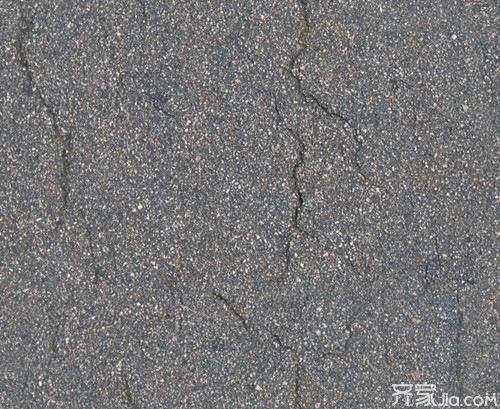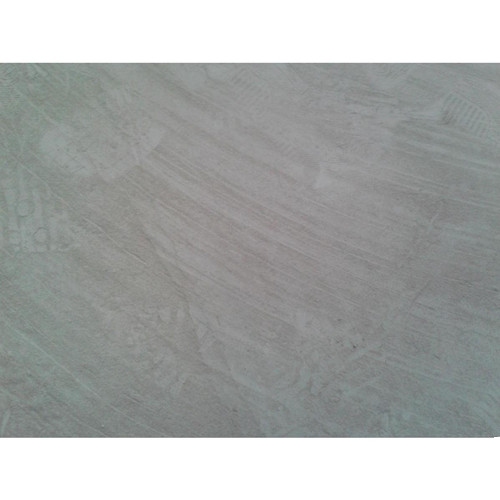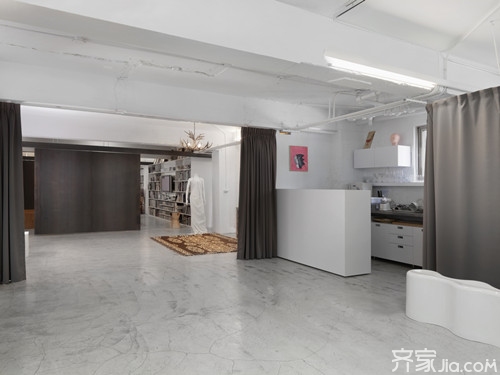Sanding on the cement floor refers to the presence of sand particles on the cement floor, which is caused by excessive water-cement ratio, unreasonable gravel aggregate distribution, and high clay content. During the construction of indoor concrete floors, there may be some sanding phenomenon due to improper indoor cement ground practices . Today, I will take everyone to understand these issues and help us find similar problems to solve at the same time. This article is based on some frontline construction. The staff has compiled many years of experience and hopes that this related question about indoor concrete floor practices and basic processes can help everyone solve some problems. Indoor cement floor practices and basic processes 1. Thickness 1:2 cement mortar compaction plastering cement mortar ground quota 2. Sasson cement surface (sprinkle appropriate amount of water) 3. Thick 1:3 cement mortar for leveling leveling 4. Thick 1:4 hard cement mortar combined layer leveling layer 5. Thick C15 concrete with stroking concrete cushion Indoor cement floor practice problems solution According to the environmental classification, there are indoor and outdoor floors on the ground, concrete floor, concrete floor, and brick floor according to the structural form. According to the functions, there are professional grounds and ordinary grounds. This article describes the cement floor which is one of the most common structural forms. It is characterized by low cost, easy construction, and easy maintenance. However, its quality problems are also many, such as cracking on the ground, hollowing, sanding, and peeling, which affect both the use and appearance. Based on the above common phenomena, explore the causes and measures taken. 2, cracking the ground Cracking of cement floors mainly includes cracking of floor slab cracks, horizontal cracking of floor slabs, and irregular cracks in the ground surface. 2.1 cracks along prefabricated floor slabs 2.1.1 Main reasons (1) Pouring quality defects. The first is not enough attention to ideology, that the board seam is not the main part, watering is not careful. Second, the construction is rough, not serious, even using large particle size aggregates. Some of the board seams are empty, which reduces the effective section. Thirdly, the floor is not timely filled and the joints are not carefully treated, which affects the bond strength with the floor. Because the quality of the grouting cannot be guaranteed, when the external load is applied, the floor can not work in coordination, and when a certain floor is under a lot of pressure, it will crack along the board and cause quality problems. (2) Floor slab seam concrete curing is not good, or it is not maintained at all, so that the strength of the slab seam concrete is reduced and the shrinkage is severe. Shrinkage cracks may occur at the seams of the slab and affect the shear strength of the slab seam. Cause further cracking. At the same time, shrinkage cracks will also affect the upper cement sand crack surface layer and fine stone concrete layer. In the hardening process, the shrinkage will generate tensile stress on the surface layer due to the constraints of the floor slab. When the stress exceeds the ground's tensile strength, the ground cracks. Because the ground surface layer and the floor are bonded together, the tensile strength is greater under the joint action, and at the filling seam, since the concrete already has shrinkage cracks, the tensile stress here is entirely borne by the ground surface layer. Its tensile strength is very low, so the ground cracks. (3) The floor is overstressed or oversized. In the construction and use, the floor load is too large, such as the effect of the construction load, often cracks in the plate joints; especially in the larger concentrated load, it is easier to produce cracks. (4) Floor stiffness is small and deflection is great when used. The rigidity of the veneer is small, and cracks are more likely to occur under concentrated loads. 2.1.2 Treatment measures Firstly, it is necessary to attach importance to the process of plate joints; second, the pre-embedded pipes should be fixed at the specified positions before watering. 2.2 Transverse cracks in the floor of the prefabricated floor slab 2.2.1 Main reasons (1) The floor slab is subject to deflection under load. The deflection is greatest at the midspan and the plate ends are upturned. If there is no steel mesh sheet bearing a negative bending moment in the concrete pouring layer at the board end support, cracks will be generated at the ground surface of the seat. If the temperature difference of the floor slab is large when used, the longitudinal shrinkage of the floor slab can also cause and aggravate the damage of such cracks. (2) Due to uneven settlement, free rotation on the floor support causes cracks on the surface. (3) When the floor slab is installed, it is not true that it is not seated or seated; the poor quality of the concrete at the slab end causes cracks at the end of the slab. 2.2.2 Treatment measures In addition to the construction of the plate joints, a negative bending moment reinforcement mesh may be added at the meeting point of the components. The mesh pieces are arranged below the surface layer and above the leveling layer. 2.3 irregular surface cracks 2.3.1 Main reasons (1) The cushion quality is poor and the backfill soil is not compacted. After the ground is completed, the backfill subsides, causing cracks on the ground. The level of concrete cushions on the floor is uneven, and vibrations are not true, and laxity is not achieved. As a result, the thickness of the surface layer is not uniform and shrinkage is inconsistent, resulting in cracks. (2) The mixing ratio is unreasonable and the agitation is uneven, which not only reduces the tensile strength of the ground, but also reduces the adhesion of the mortar and the base layer, resulting in cracking of the ground. (3) The poor quality of raw materials is one of the main causes of cracking on the ground. Cement: poor stability of cement, shrinkage during hardening. Sand: If the grain size is too small or the mud content is large, the ground strength will also be affected, and the ground will shrink and crack easily. (4) The ground maintenance is not good. The ground maintenance is not timely or time is not enough, and it has a great impact on shrinkage cracks, especially in the early days of water loss, and the contraction is more serious. Practice has proved that the ground has a large early contraction after completion and contraction decreases after 7 days. Therefore, we must pay attention to early ground care, otherwise the ground will be severely cracked due to low tensile strength. (5) Cracking caused by empty drums. 2.3.2 Control measures Cement ground is best to use ordinary portland cement with good stability, the cement ratio of cement mortar should be appropriate; sand should be used in sand, the grassroots should be flat; large area of ​​the ground should be divided; before plastering The grassroots should be cleaned and leveled; the backfill should be carefully consolidated; the surface of the prefabricated parts that need to be wiped must be excavated; the cement must not be sprinkled when calendering, and the sand should be calendered with 1:1 cement sand. 3, empty concrete floor main reason 1 cushion quality is poor (1) The strength of the concrete is too low, which affects the adhesion between the surface layer and the cushion, making it easier for the floor to empty. (2) Before the construction of the ground surface, the construction of the cushion was not in place. 2 The cushion (or base layer) is not handled properly (1) The cushion is not even: The floating soil, dust, and sundries on the surface will directly affect the flatness of the cushion, which will easily cause empty drums. (2) Insufficient water conservation. (3) Cement slurry is brushed prematurely. When the surface layer is applied, the slurry has dried and hardened, and the strength is very low. Not only can not be bonded, but it will become a hollow layer of isolation. The quality of raw materials is also a factor that influences the empty surface; therefore, the quality of purchased materials should be strictly controlled and on-site protection work should be done. 2 Prevention and control measures To maintain sufficient strength in the concrete cushion, clean the debris and water on the surface and spray water before construction. 4. Sanding on the cement floor The sanding on the cement floor often appears everywhere in the project. The sanding on the ground not only affects the use but also affects the appearance. 4. The main reason 1 Mortar with excessive water-cement ratio will have lower strength than mortar with excessive water-cement ratio, and it will also cause bleeding. Once it is completed, it will start sanding once it is moved. 2 The quality of raw materials is poor. Use low or expired cement. If the sand is too fine or has a large amount of mud, it will affect the strength of the mortar and cause sanding. 3 The calendering time is not properly controlled. The calendering is too early. The cement hydration heat has just begun. The cement gel has not yet been fully formed. The free water is still more. Even if the surface is flat, there is moisture. The strength and wear resistance of the surface mortar Disadvantageous; Calendering too late, the cement has finally set, the surface of the traces and pores can no longer be eliminated, and will disturb the hard surface of the knot and sand. 4.1.4 Incorrect maintenance In the course of hydration, the concrete mortar can reach a certain strength through watering curing or guaranteeing moisture coverage; if it is cured too early, it will not be carried out after the final coagulation, and it will also lead to large-area peeling or exposed sand grains. , causing sanding phenomenon. 4.1.5 The finished product is not well protected. If the ground does not reach a certain intensity, people will walk around or work on it. The surface of the ground will be damaged by sanding. 4.1.6 When the cement ground is frozen in the winter construction, the indoor temperature must be ensured, otherwise the ground will be loose when it is frozen early. 4.2 Control measures First, use good materials. The best choice of cement is ordinary Portland cement not less than R42.5; the clay content in medium sand is not more than 3%, and the consistency of mortar is not more than 3cm. The calendering time must be properly grasped. The calendering time depends on different types of cement, different consistency, and temperature during construction, and is completed before final coagulation after initial setting. To eliminate indentations and pores. At the same time, the maintenance of the ground should be strengthened, and the wet wood tip should be used for conservation. The time should not be less than 7 days, and it must not be frozen in the early stage. The strength of the upper human must reach 5 Mpa or more. Editor's summary: The above-mentioned quality problems in cement floors are generally due to improper or inconsiderate practice of indoor concrete floors. It is a user's influence on the results of use, and it is aesthetically unpleasing; therefore, whether it is The design unit or the construction unit should be highly valued. Seriously deal with quality issues, timely processing, good quality; to meet the specification and user satisfaction. Entrance floor tile price list yellow sand cement purchase sand cement homemade cement cabinet
Ningbo GDoor Hermetic Sliding Doors use a specially designed track along with special rubber attached to the inside and downside of the door. In the closing process, the door compresses the rubber to the frame achieving the hermetic effect. GS60H1 medical hermetic sliding door is specially designed for hospitals. Heavy duty hermetic doors are available for customers to select. All Ningbo GDoor hermetic doors are perfectly applied to places with high environmental health standard such as hospitals, laboratories, research institutes, food processing workshops, etc.
Hermetic Door Set,Sealing Front Door Set,Automatic Door Set,Sliding Partition Doors Set Ningbo Gdoor System Control Technology Co., Ltd. , http://www.gdoor-cn.com

